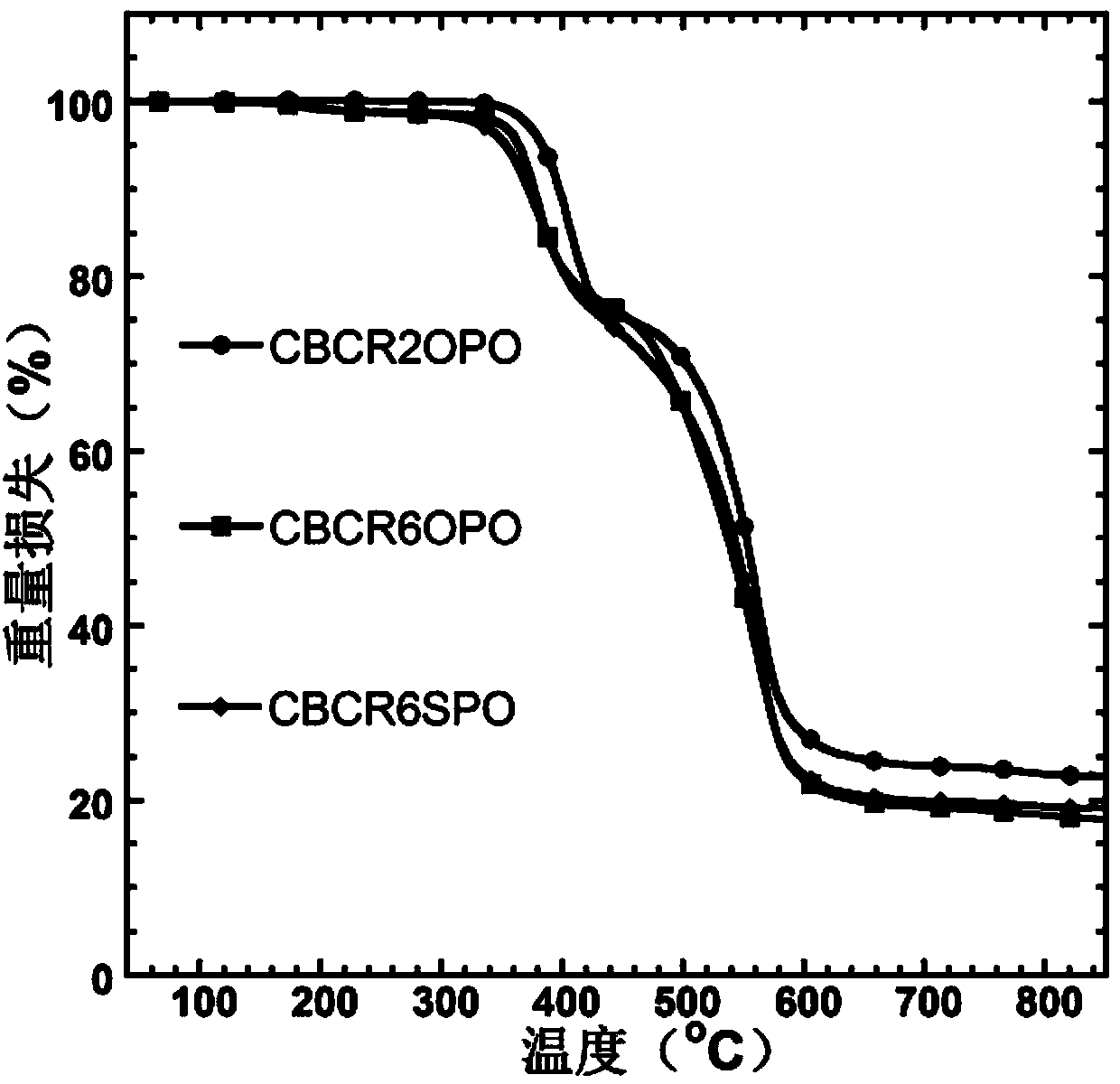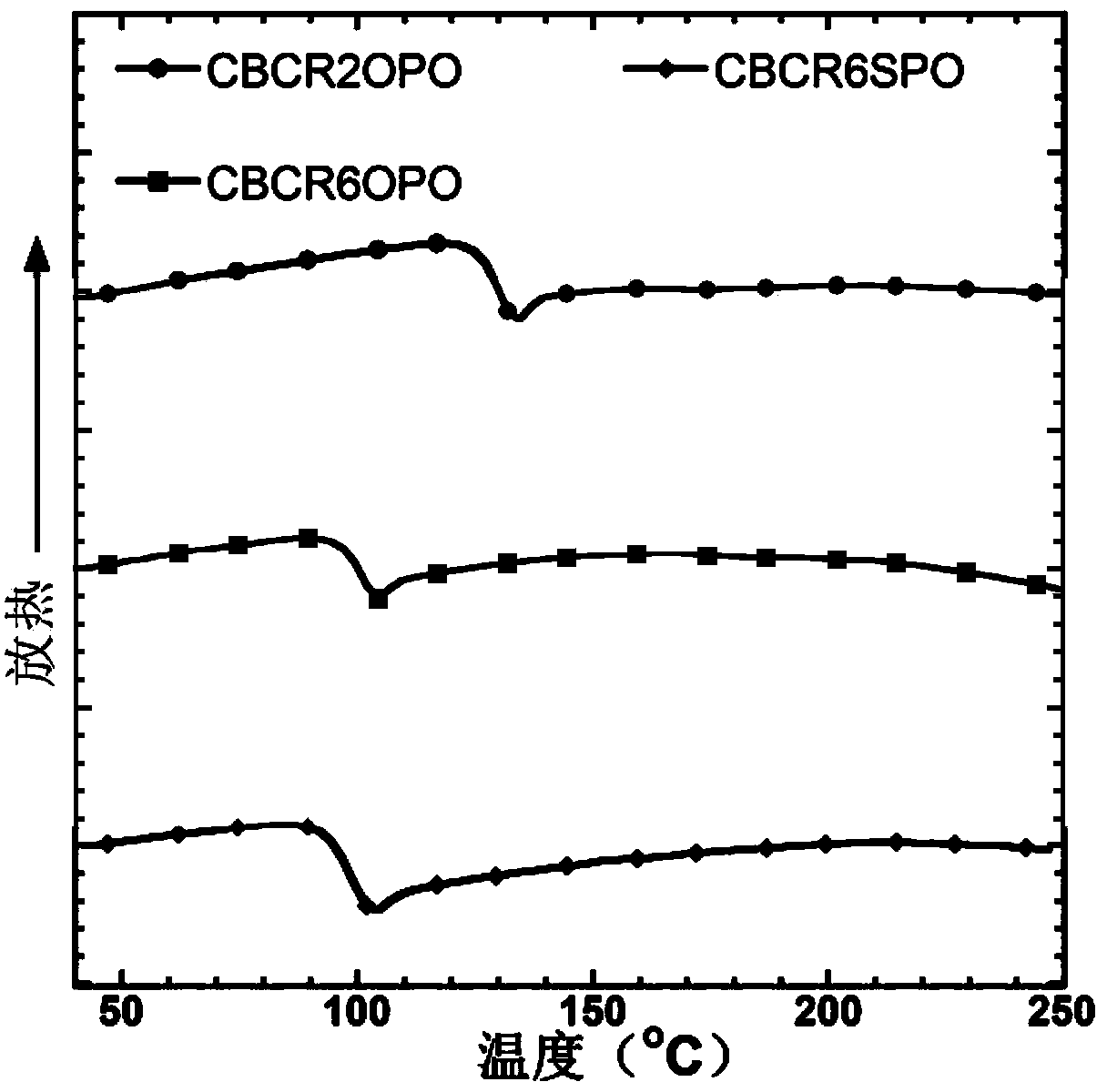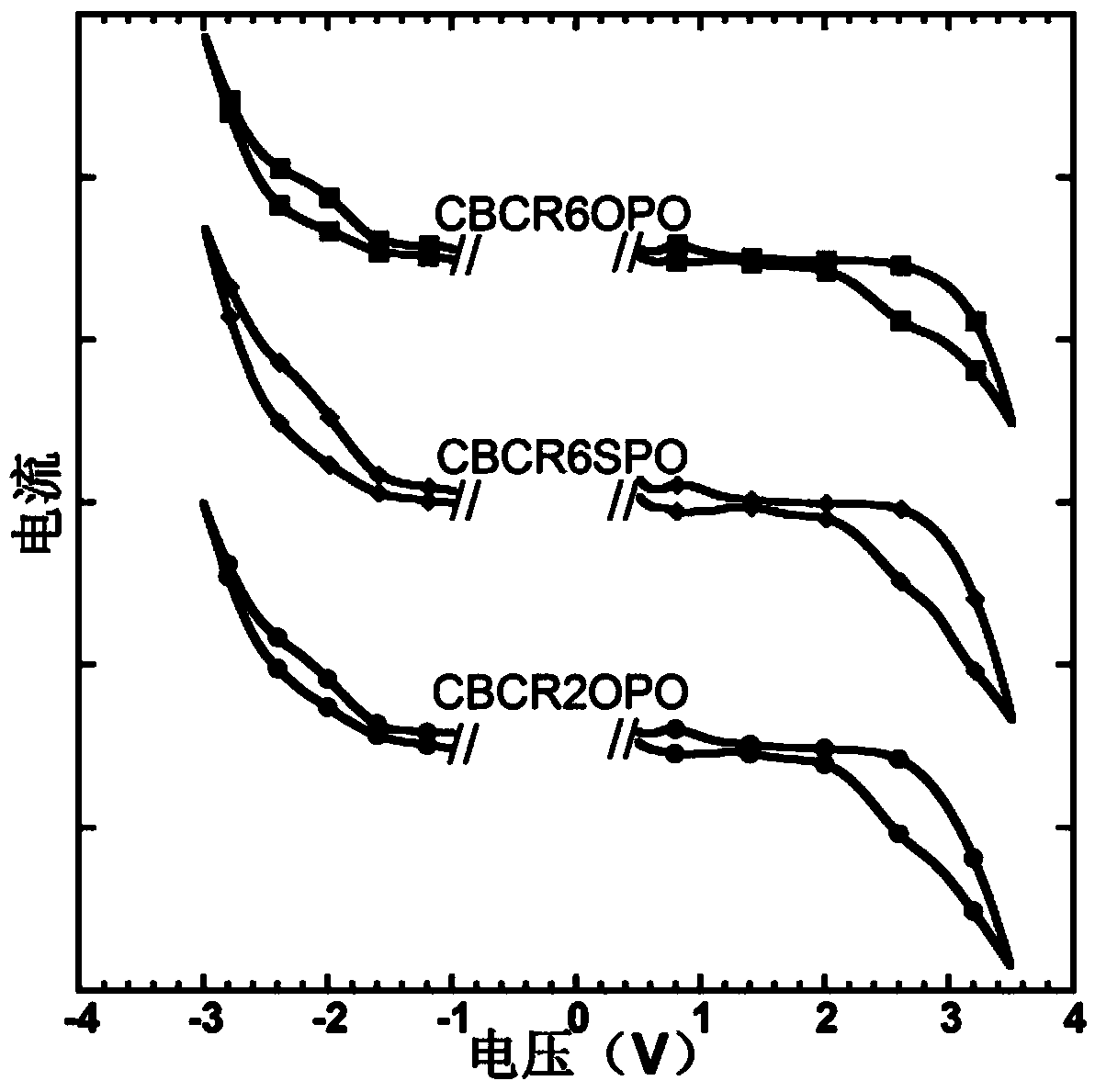Micromolecular host material based on D-R-A as well as preparation method and applications thereof
A host material and small molecule technology, applied in the field of D-R-A-based small molecule host material and its preparation, can solve the problems of device performance degradation and annihilation
- Summary
- Abstract
- Description
- Claims
- Application Information
AI Technical Summary
Problems solved by technology
Method used
Image
Examples
Embodiment 1
[0058] Step 1: Preparation of 2-(3,6-dibromocarbazol-9-yl)ethanol (a1)
[0059]
[0060] Under nitrogen atmosphere, add potassium hydroxide (KOH) (10.52g, 187.5mmol), 60ml DMF, 3,6-dibromocarbazole (9.76g, 30.0mmol) into a 250ml three-necked flask, stir for 30min, and use a syringe 2-Bromoethanol (2.4ml, 31.5mmol) was added dropwise, the mixture was heated to 155°C and reacted overnight. After cooling to room temperature, add an appropriate amount of water to quench the reaction, dilute with dichloromethane (DCM), separate the liquids to obtain an organic phase, extract the water phase with DCM 3 times, combine the organic phases, and wash the organic layer 3 times with saturated brine . Dry over anhydrous magnesium sulfate, filter with suction, remove the solvent from the obtained filtrate under reduced pressure; column separation (9.15g, 24.8mmol) white solid. Yield 82.7%. 1 H NMR (300MHz, CDCl 3 ), (ppm):8.14(s,2H),7.57-7.54(d,2H),7.35-7.32(d,2H),4.42(t,2H),4.03(t,...
Embodiment 2
[0068] Step 1: Preparation of 6-(3,6-dibromocarbazol-9-yl)-hexan-1-ol (b1)
[0069]
[0070] Under a nitrogen atmosphere, add KOH (10.5g, 187.5mmol), 60mlDMF, 3,6-dibromocarbazole (9.75g, 30.0mmol) into a 250ml three-necked flask, stir for 30min, and add 6- Chlorohex-1-ol (4.4ml, 31.5mmol), the mixture was heated to 155°C and reacted overnight. After cooling to room temperature, an appropriate amount of water was added to quench the reaction, diluted with DCM, and separated to obtain an organic phase. The aqueous phase was extracted three times with DCM, the organic phases were combined, and the organic layer was washed three times with saturated brine. Dry over anhydrous magnesium sulfate, filter with suction, remove the solvent from the filtrate under reduced pressure; column separation (6.36g, 15.0mmol) white solid. Yield 50.0%. 1 H NMR (300MHz, CDCl 3 ), (ppm):8.14(s,2H),7.55(d,2H),7.28-7.25(d,2H),4.25(t,2H),3.62(t,2H),1.90-1.80(m,2H), 1.60-1.50(m,2H),1.40(m,4H). ...
Embodiment 3
[0078] Step 1: Preparation of 3,6-dibromo-9-(6-bromohexyl)-9H-carbazole (C1)
[0079]
[0080] Under a nitrogen atmosphere, sodium hydride (NaH) (1.44 g, 60 mmol) was added to a three-necked flask equipped with 80 ml of anhydrous THF, and then 3,6-dibromocarbazole (9.75 g, 30.0 mmol) was slowly added, and again Add 1,6-dibromohexane (22.0 g, 90.0 mmol) gradually, heat the mixture to reflux, and react overnight. After cooling to room temperature, it was poured into water, diluted with DCM, and separated to obtain an organic phase. The aqueous phase was extracted 3 times with DCM, the organic phases were combined, and the organic layer was washed 3 times with saturated brine. Dry over anhydrous magnesium sulfate, filter with suction, remove the solvent from the filtrate under reduced pressure; column separation (4.63g, 9.49mmol) white solid. Yield 31.6%. 1 H NMR (300MHz, CDCl 3 ), (ppm):8.14(s,2H),7.55(d,2H),7.28-7.25(d,2H),4.26(t,2H),3.36(t,2H),1.91-1.76(m,4H), 1.50-1....
PUM
| Property | Measurement | Unit |
|---|---|---|
| thermal decomposition temperature | aaaaa | aaaaa |
| current efficiency | aaaaa | aaaaa |
Abstract
Description
Claims
Application Information
 Login to View More
Login to View More - R&D
- Intellectual Property
- Life Sciences
- Materials
- Tech Scout
- Unparalleled Data Quality
- Higher Quality Content
- 60% Fewer Hallucinations
Browse by: Latest US Patents, China's latest patents, Technical Efficacy Thesaurus, Application Domain, Technology Topic, Popular Technical Reports.
© 2025 PatSnap. All rights reserved.Legal|Privacy policy|Modern Slavery Act Transparency Statement|Sitemap|About US| Contact US: help@patsnap.com



